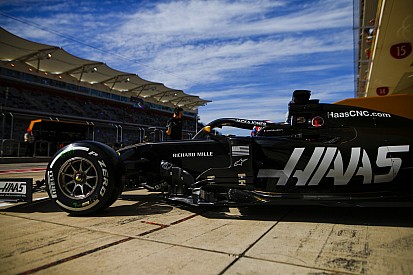Tech insight: What we can expect from the 2020 F1 Mercedes
On the eve of a new Formula 1 season, one team will feel the weight of expectation like no other, having already achieved an uninterrupted sequence of six double world championships.
Mercedes stands on the precipice of a regulatory clean-sweep, vying for the last ‘double’ available in this hybrid era. Scheduled to be unveiled at Silverstone on February 14, the W11 will be an evolution of its predecessor, as the team looks to iron out any imperfections and bring even more performance to bear.
Information gathered ahead of time reveals changes that may help the team to unlock latent performance from a machine that was already pretty formidable last season.
Having scrutinized its own weaknesses and closely studied the opposition’s designs, Mercedes has taken a design concept introduced by Ferrari in 2017 and refined it to suit its own package.

Mercedes AMG F1 W10, chassis
Photo by: Giorgio Piola
The intent of this design concept is to improve flow quality into the radiator inlet and reduce the negative impact that the front tyre wake has on flow into and around the entire sidepod structure.
For 2020, Mercedes will join this group, lowering and bringing the uppermost side impact protection spars forward to improve power unit performance and reliability, while reducing drag and refining the aerodynamic output of the car.
Mercedes is keen to edge out rivals when it comes to power unit performance once more in 2020, having given up ground to them last season.
Improving cooling efficiency will therefore be high on the agenda, in order that it can run in higher power modes for longer, as it clearly was unable to exploit the power unit upgrades introduced last season. It will expect further power gains in 2020 that must be unlocked to assure its continued success.

Mercedes AMG F1 W10, chassis
Photo by: Giorgio Piola
The W10 was already pretty extreme around the midriff, with a distinctive shape to the chassis that pulled everything as close to the body as possible.
To maximise this further, and to take advantage of the new shapes and contours in this region, it will come as no surprise if the W11 were to feature a revised fuel tank layout too, allowing even more scope for the revised radiator and sidepod packaging, while also improving weight distribution.
How we got to this point...
Click on the arrows on the images below to scroll through them
Sidepod and regulation changes since 2011

Photo by: Giorgio Piola
The FIA introduced a common side-impact protection spar (SIPS) design to reduce costs and better manage side-impact loads in 2014. This curtailed the more exotic designs we’d seen in recent years, with limited scope in the regulations restricting the design options available. However, the changes made in 2017 reopened closed wounds and once again allowed designers to rethink the placement of these SIPS and the bodywork that surrounded them. Ferrari was the first to take advantage, with the SF70H, but others swiftly followed suit, with three other teams sporting a very similar solution in 2018 and more taking advantage last season.
Mercedes W08 front suspension

Photo by: Giorgio Piola
The use of this sidepod solution may bring the curtain down on a solution that Mercedes has employed since 2017. The necessity to improve flow to these periscope-style sidepod inlets has meant that teams that have moved to this solution have also utilised suspension setups that sit as low as possible, reducing flow impedance. Therefore, it would come as no surprise to see Mercedes do the same, casting aside their upright extension on the front suspension (red arrow), in favor of a more conventional arrangement.
Mercedes W10 front suspension detail

Photo by: Giorgio Piola
The Silver Arrows also tested a mechanical heave damper arrangement in the latter phases of 2019 too, not only with an eye on this season and perhaps the aforementioned change in suspension design, but also in advance of the impending changes for 2021, where a more classically sprung solution will be required.
Benetton B187/B186 chassis comparison

Photo by: Giorgio Piola
Giorgio Piola reminds us that nothing in Formula 1 is really new, as teams often follow concepts created by others or revisit previous solutions based on the prevailing regulations. For example, the Benetton B187 used a T-shaped body in the rear to recess the radiators, when compared with the more conventional layout used on the B186.

Previous article
Ricciardo: Netflix doc put F1 "on the map" in the US
Next article
Grosjean: Speaking out key to avoiding more trouble in 2020

About this article
| Series | Formula 1 |
| Teams | Mercedes Shop Now |
| Author | Matthew Somerfield |































